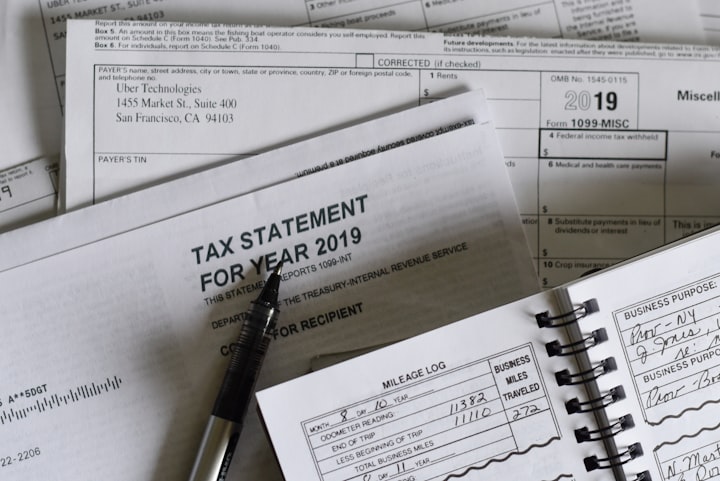Your Suburb has a Racist History
Southern California Development has a history of racism

Coming out of the Second World War and the Zoot Suit Riots, whites in Southern California decided they were not going to share space with minorities anymore. Mexicans, Latinos, and Los Angeles’ new black population were all excluded from the visions of suburbia planned in the postwar period. Still the minorities exist in Southern California, so whites sought to find the space for their homogeneity that had declined during the prewar period and defend it with laws, distance, physical barriers, and culture.
Prewar Los Angeles was the era of racially restrictive covenants. As Becky M. Nicolaides points out that from 1900 to 1940 racial restrictions linked both working class and upper class suburbs. Later in her piece Nicolaides discusses the very Mexican American labor camps turned working class suburbs created by Pacific Electric Rail. Creating what she describes as islands of working class in the middle of white middle class suburbia. This is a good example of the proximity of these ethnic groups that will become more contentious after the postwar period. As a result of the Zoot Suit Riots, the removal of racially restrictive covenants, and the riots in Watts.
The depiction of neighborhoods in civic Los Angeles in Eduardo Obregon Pagan’s piece on the Zoot Suit Riots is very much not suburban. As demographics indicate renters, high population density, and proximity to the city center. Regardless the relationship between Alpine, Chaves Ravine, and Downtown, and the issues with defining these borders will be a theme of suburban areas in postwar Los Angeles. “The zoot suit became a shorthand in the written and articulated public discourse of the politically dominant over hegemonic concerns about public safety and the social relations upon which both ‘public’ and ‘safety’ rested.” Which ties in well to the banning of the zoot suit, which is a lead in to the more creative ways whites in LA attempt to create space through legal finagling and imagination. The races had to be separate for public safety, despite physically not being very far apart.
This is the causation of white flight, what Eric Avila described as the “racial resegregation of the United States” in the postwar period. A resegregation that took place in part because of racist federal housing policies that concentrated on building suburbs and not the inner cities, specifically the Home Owners Loan Corporation, the Federal Housing Administration, and the Veterans Administration. The loss of legal racially protective covenants in 1948 and 1953 due to Supreme Court rulings made keeping minorities out of areas and suburbs more difficult. Paving the way for the blackening of areas like Watts and later Compton. Compton is an excellent city to showcase the legal or political methods whites used to prevent integration in the suburbs. Josh Sides describes in addition to covenants the legal or political methods used by the white suburbanites in Compton to prevent the cities blackening. Such as using infrastructure investment to price out Mexican American’s from Compton’s Barrio, having the police harass minorities that enter the city, and having relators and banks discriminate between home buyers. Ironically it would be whites of Compton desire for more space after the Watts riots, and the fact that blacks would pay more for houses in Compton than whites that starts Compton’s blackening in the 1960s.
In other areas such as the San Fernando Valley cities were completely planned and designed to fit a white client, “beginning in the early-twentieth century, urban planners and community builders deliberately incorporated elements of rural lifestyles into their urban planning practices in order to maintain racial segregation and reduce labor organizing.” These settlements which were often very dispersed and farther from the city were of a higher class than the white residents of Compton, and ranged all the way to the very poor. The placement of these rural developments enabled whites to purchase land, and even build their own homes do to relaxed civic ordinances. To keep these neighborhoods white however, and minorities from sharing the economic mobility, Hispanics and blacks were redlined into the city, where the rural advantages were not available. In the San Fernando Valley and Shadow Hills specifically this ability to politically forward white interests became self-fulfilling. Over the years the community used its political influence to protect its homogeneity but also its rural atmosphere. Where elsewhere in Los Angeles rural neighborhoods were under attack. By systematically removing neighborhoods of color that were rural the white residents were able to monopolize rural suburbs for their identity. As Barraclough points out, the same year that Shadow Hills obtains horse zoning, 1962; Chavez Ravine is urbanized into Dodger Stadium.
Lastly as an antithesis to all this active legal fortification and political power struggling areas in Orange County simply were too expensive to have much attempted integration. While minorities often Latinos have created satellite communities around Irvine because they are needed to serve the thriving service economy there.
Before Compton went black in in the ‘60s the whites of Compton attempted to keep control of the city in aggressive and illegal ways, as the traditional methods mentioned previously began to fail. This included intimidation, cross burning, and vandalism. While this method very surely failed Compton, it has not deterred others from taking non-traditional methods to protect the homogeneity of their space.
D. J. Waldie in his memoir Holy Land explores Lake Wood California, and some of the conformist measures that exist in the space. “By ordinance, every house must have a city tree planted in front of it.” This kind of conformity may not have the potent effect of regulating race, but it does highlight a certain expectation of the suburban community. In Irvine it is common to have class distinct laws that inhibit the people that live there, for example limiting the occupancy of homes, and forbidding the repair of cars in driveways. All in the notion of maintaining class homogeneity. The preference for white sports, like swimming over basketball, takes a step toward being more directly racist.
Still all this conformist work may seem to pale in comparison to the intimidation techniques that were used in Compton, but when you factor in the physical steps Ridgewood and other Irvine communities are considering to ensure that they don’t undergo the same transitions as Compton the similarities become clearer. According to Maher resident’s in Ridgewood convey a general distrust of minorities, and worries about the access the freeway brings to their community. Which connects well to this passage from D.J. Waldie’s memoir “He had his choice of freeway off-ramps; he chose one that brought him to my city.” The freeway is essentially viewed in the suburbs as an uncontrollable passage bringing bad people from bad places, while in many ways suburbia is only possible with freeways into city centers. Lastly Ridgewood’s serious consideration of a wall to prevent no existent crime, and convey status is the ultimate example of this notion that something must be done to maintain this lifestyle, as if something good must be trapped in, or the bad out.
There was a concerted effort to build barriers within our culture. Creating cultural ownership and much as creating physical ownership. An ownership that was just as malleable, as white sailors and LA residents brawled with Chicano youth over what was the cultural ownership of downtown, whites would abandon downtown in a less than a generation as downtown became noir. Noir is a film style that adeptly displays the notion of ethnic and urban places being bad, and criminal. The same happens with Coney Island on the East Coast, it became blacker in popular culture and so the cultural ownership of it shifted to minorities. Compton as well, shifting from white to black ownership, with black culture claiming it to the extreme as the rap group N.W.A. makes the city part of their identity.
Meanwhile as white identity shed theme parks and geographies for the suburbs, new cultural no fly zones were created for minorities. Notably Disneyland and the Wild West. Disneyland was geographically a suburb itself nestled in the middle of some orange groves in the mid 1950’s and perfectly close to the I-5 freeway it was a perfect suburb. Disney had strong clear boarders, it nodded to the patriarchy, capitalism, the nuclear family, and ethnicity was displayed more as a conquered trophy, rather than as people with valid lifestyles. Inside Disneyland Frontier Land was present, but over in the San Fernando Valley, and Shadow Hills the white fantasy of the Wild West was already being built on a massive scale. Hollywood and boosters for the area created “a vision of rural land use grounded in racial and class homogeneity, private property rights, anti-urbanism, and local control that functioned as a romantic alternative to the cities dramatic demographic and economic changes.” Hollywood could sell a piece of the Wild West, and what place could be better to sell than Hollywood’s preferred area for filming westerns. Disneyland and Shadow Hills are prime examples of places that are white demographically, but also white culturally, owned and intentionally unshared. In many way the places were more culturally white than physically white, for example Disney employed minorities for tourist to ogle and there were minority communities in the valley that work there in service.
Suburbia is a product, or is at least shaped my race and class relations in postwar LA. The barriers between communities run deep, through legal and financial barriers, physical intimidation, physical barriers, established norms, and cultural occupation, the suburban landscape is still very divided in southern California. The changes in living situation and landscape in postwar Los Angeles has defined several generations, and the actions of those generations have affected the geopolitical history and future of Los Angeles.
1 Becky M. Nicolaides, “‘Where the Working Man Is Welcomed’: Working Class Suburbs in Los Angeles, 1900-1940” Pacific Historical Review, Vol. 68, No. 4 (Nov., 1999) pp. 523
2 Ibid. Nicolaides, pp. 544
3 Eduardo Obregon Pagan, “Los Angeles Geopolitics and the Zoot Suit Riot, 1943” Social Science History, Volume 24, Number 1, Spring 200, pp. 227-230
4 Ibid. Pagan, pp. 249
5 Eric Avila, “Popular Culture in the Age of White Flight: Film Noir, Disneyland, and the Cold War (Sub)Urban Imaginary Journal or Urban History, November 2004 pp. 4
6 Ibid, Eric Avila, pp. 6
7 Josh Sides, “Straight Into Compton: American Dreams, Urban Nightmares, and the Metamorphosis of a Black Suburb” Project Muse. pp. 586
8 Ibid. Sides, pp. 584-586
9 Ibid. Sides, pp. 586-591
10 Laura R. Barraclough, “Rural Urbanism: Producing Western Heritage and the Racial Geography of Postwar Los Angeles” The Western Historical Quarterly, Vol. 39, No. 2 Summer 2008, pp. 180
11 Ibid. Barraclough, pp. 181
12 Ibid. Barraclough, pp. 194
13 Kristen Hill Maher, “Borders and Social Distinction in the Global Suburb” Project Muse pp. 784-786
14 Ibid. Sides, pp. 586-591
15 D.J. Waldie, Holy Land A Suburban Memoir 1996, 2005, pp. 55
16 Ibid, Maher, pp. 792-794
17 Ibid. Maher, pp. 787
18 Ibid. Waldie, pp. 51
19 Ibid, Maher, pp. 788
20 Ibid, Avila, pp. 9
21 Ibid, Sides, pp. 596
22 Ibid, Avila, pp. 14-16
23 Ibid, Barraclough, pp. 182





Comments
There are no comments for this story
Be the first to respond and start the conversation.